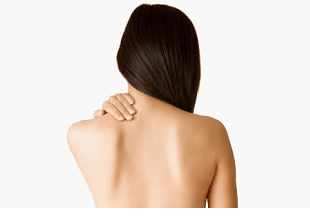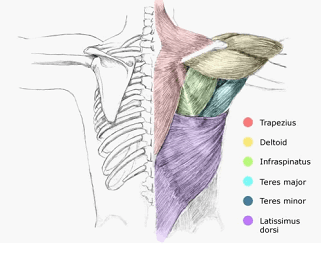Pockets for your shoulder blades. A wonderful gift to your neck and upper back

Struggling with neck tension? A stiff upper back? Shoulder and arm pain? Headaches?
Have you ever asked yourself, "Are my shoulder blades in their pockets?" This trick will help you to hold your shoulder blades in the correct position, alleviating many common problems stemming from this area.
But what does this all mean?
Whether you are in our Fix Program Pilates classes or in physiotherapy treatment, we always emphasise that good pelvis position provides your lower back with a sturdy base. We know that poor pelvic stability and posture is regularly linked to back pain. At the other end of the spinal chain, there are many muscles criss-crossing your upper back and neck, many of them connecting to your shoulder blades. In fact, supporting the neck and shoulder girdles is their main function. In the same way as the pelvis, a well-situated pair of shoulder blades stabilises your shoulders, upper back, and neck by evenly distributing tension and stress across the area. If they are poorly positioned, they can make matters much worse.
Let's look closer at the important anatomy of the region

The shoulder blades (or scapulae) float around on top of your ribcage and some of the muscles that hold them in place are highlighted in the picture above.
The big neck muscles (trapezius) connect the neck, shoulder and upper back. If these muscles become tight from being overused ( such as too much PC work), they not only pull on your neck but also on the shoulder blade, which can cause a variety of knock-on effects in the other connected muscles. Your scapula can be pulled out of alignment ( such as sit too high or drop too low on your upper back) or be prevented from sitting flush against your body. This is the 'winged' look you see of some shoulder blades.
How do I get these upper back muscles working in a balanced way about my shoulder blade?
Let's try to set our blades in a good alignment together now.
- Inhale and widen your shoulder blades across your upper back.
- Exhale and lift the outer points of your shoulders slightly upwards, bringing your shoulders slightly backwards.
- Imagine the lower tip of your shoulder blade gently sliding down your back and tucking into your latissimus dorsi (the purple muscle above), like a hand sliding into a jean pocket on your bum.
- Once you feel them settle into their pockets, your shoulder blades will evenly distribute the stress and tension in your upper back and neck much better than before, so your neck will feel wonderfully free.
This is tricky to do well without the guidance of a physiotherapist, so feel free to ask one of us to check your technique. Less is definitely more – think tiny, subtle movements of the shoulder. Try setting your blades into this posture and holding it for 30 - 60seconds, ten times throughout your day; you'll be surprised how much they jump out of their pockets when you're not paying attention! The best time to do it is when you are using your arms. Why not try when:
- you are sitting at your desk?
- you are reading?
- you are lifting groceries, laundry, bags, weights or children?
- you are feeding your baby?
- you are playing sport? during your golf swing, tennis serve, batting stroke.
I'm sure you get the idea. Try using red dots to remind you to reset your blades. You can read more about this at Exercises-to-break-poor-postural-habits.
As you begin to hold your blades in their best possible position, your neck will begin to feel more free and soft, and your upper back more relaxed. But remember, be gentle as you slide your blades flatly into their muscular pockets and use them as they were intended – to support your entire upper body.